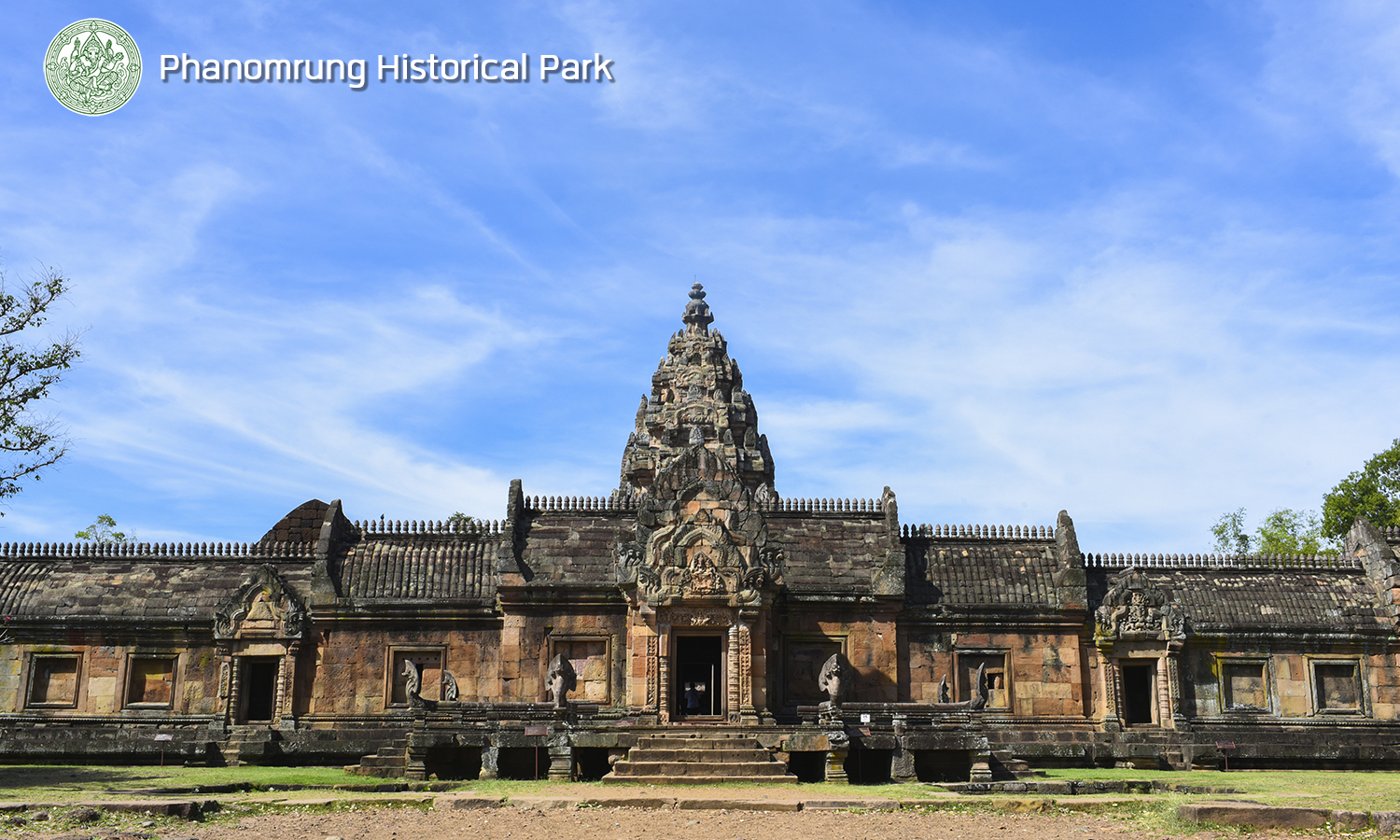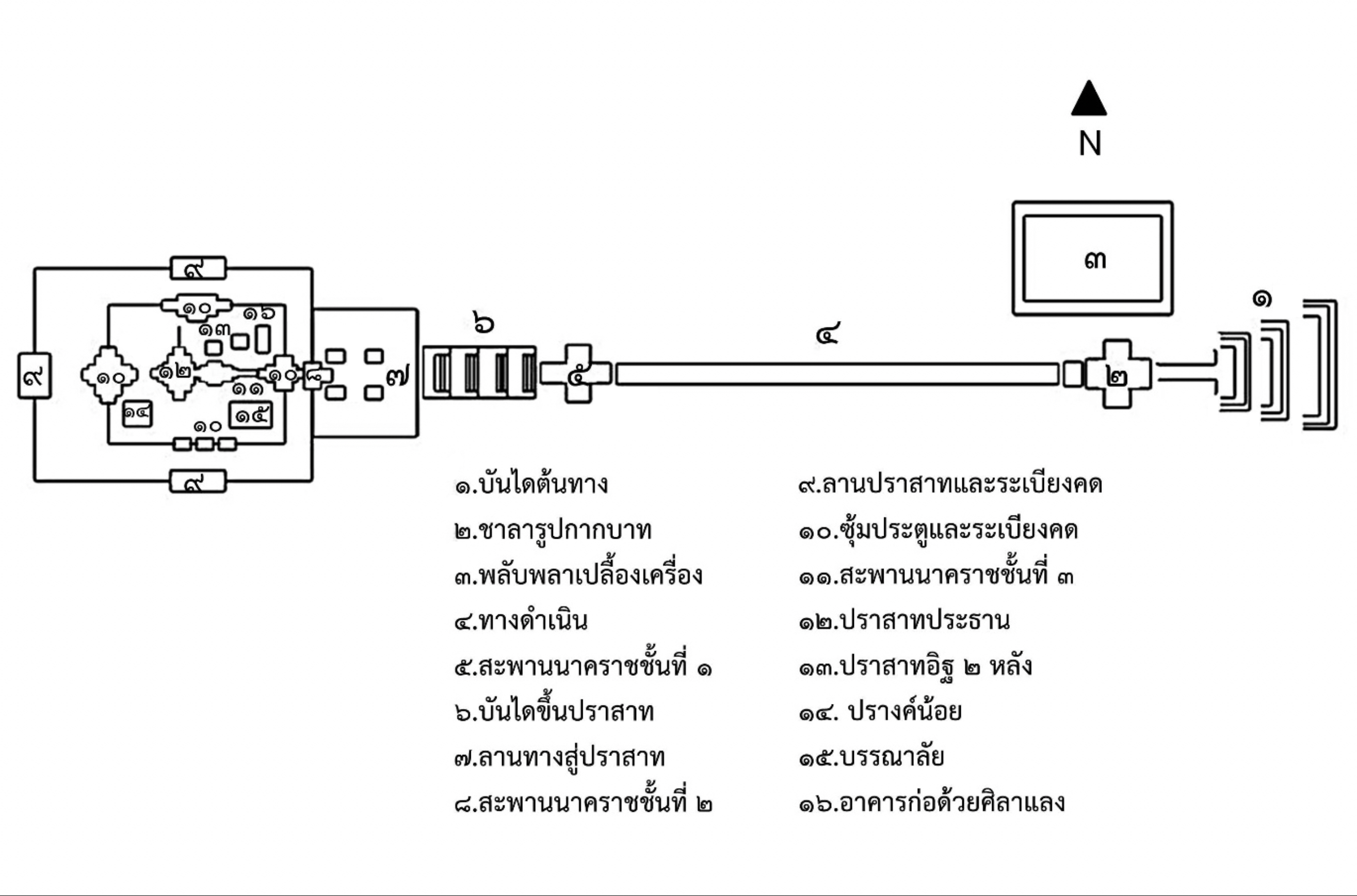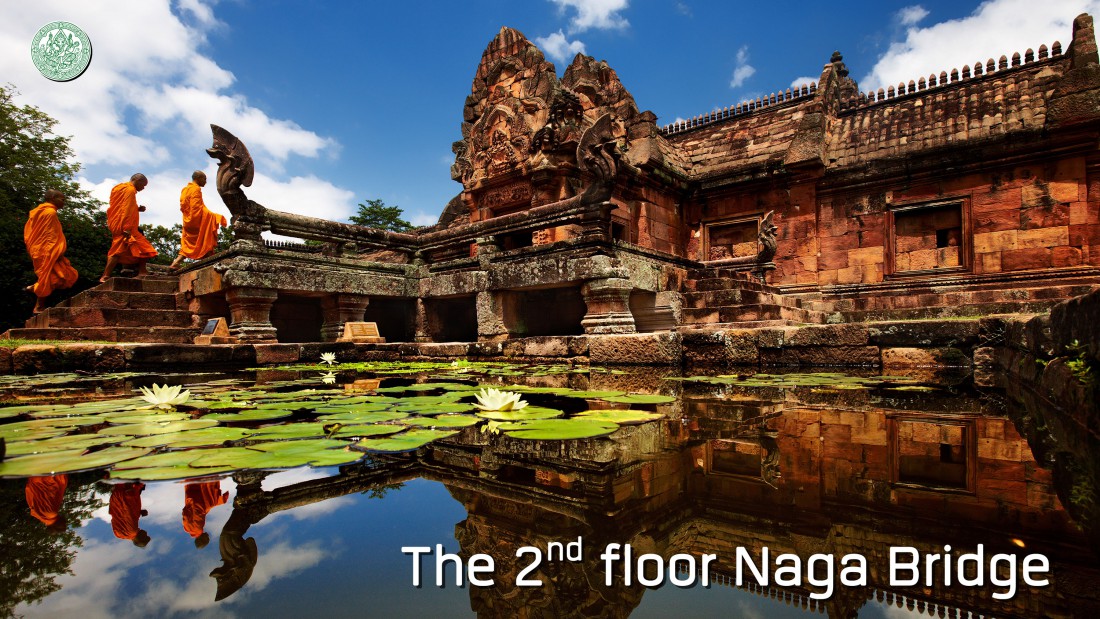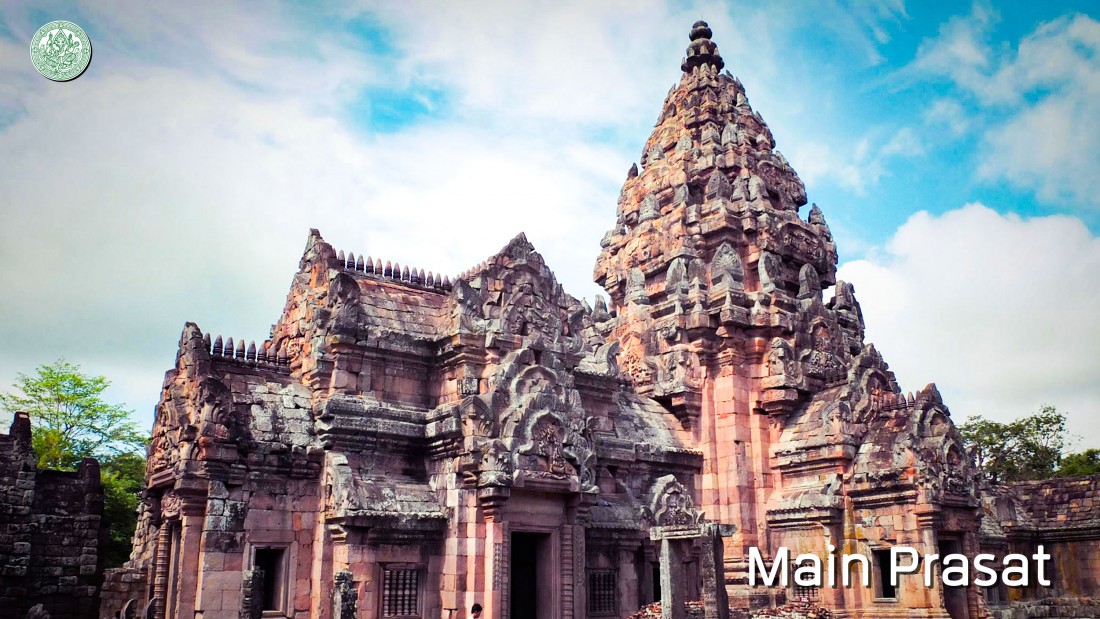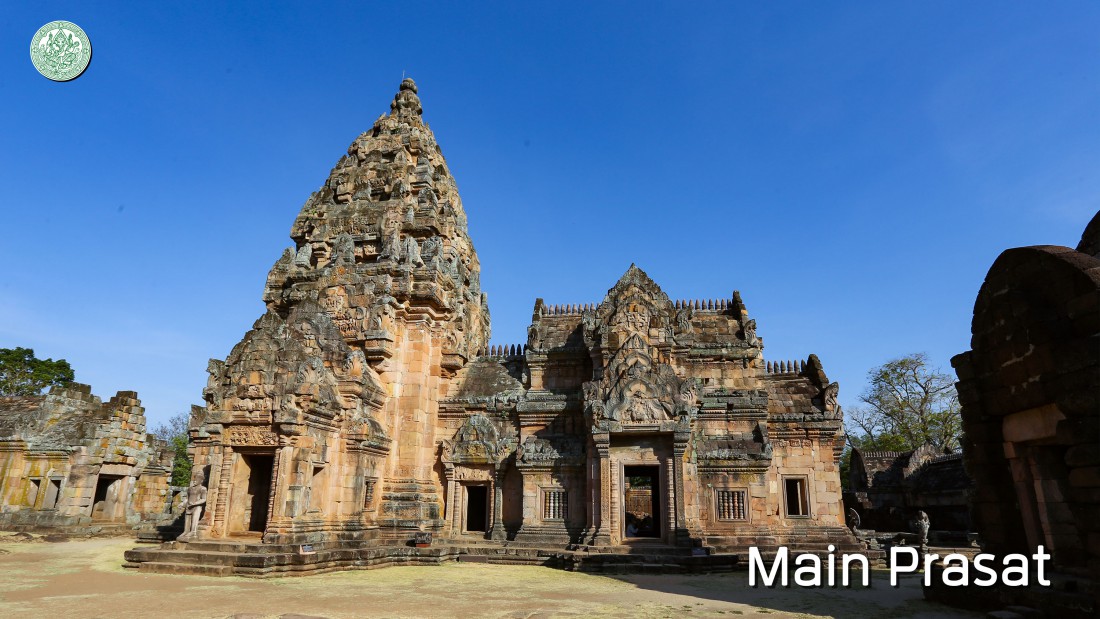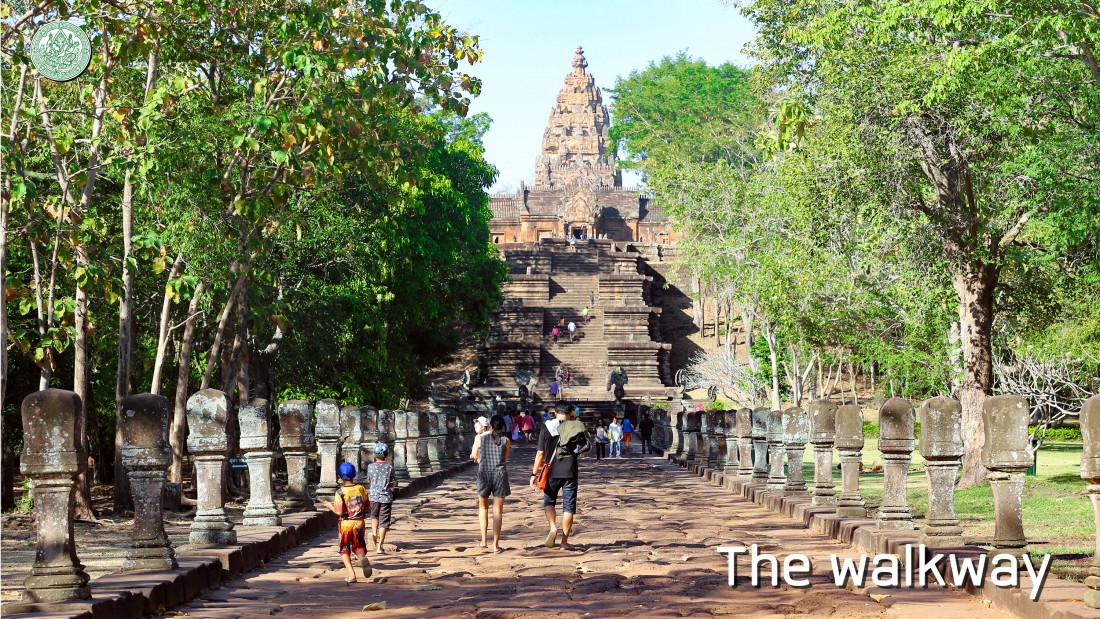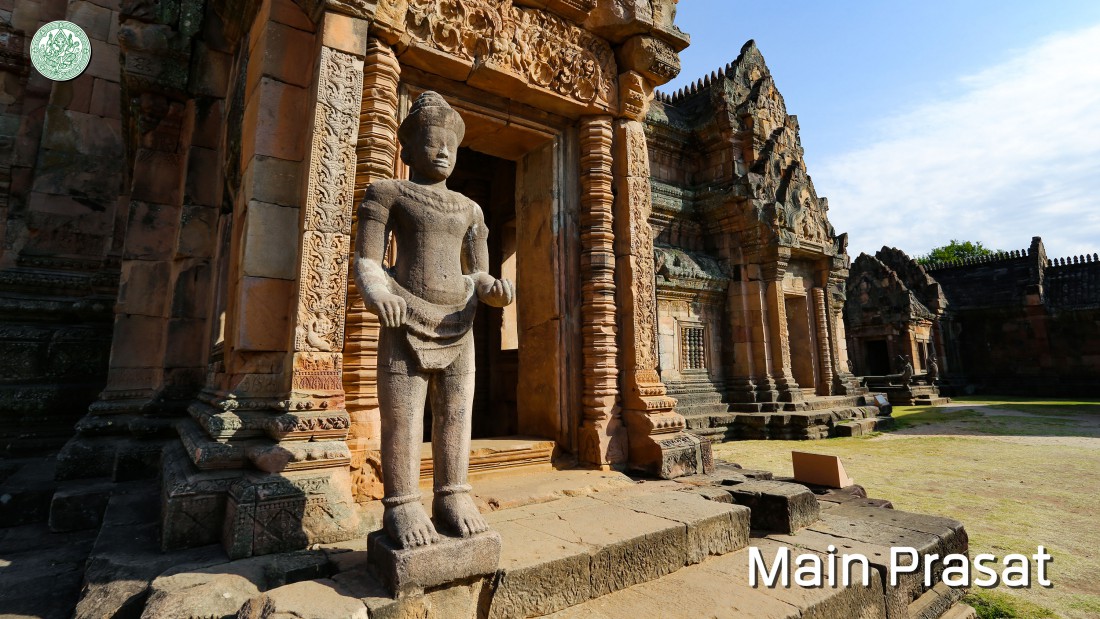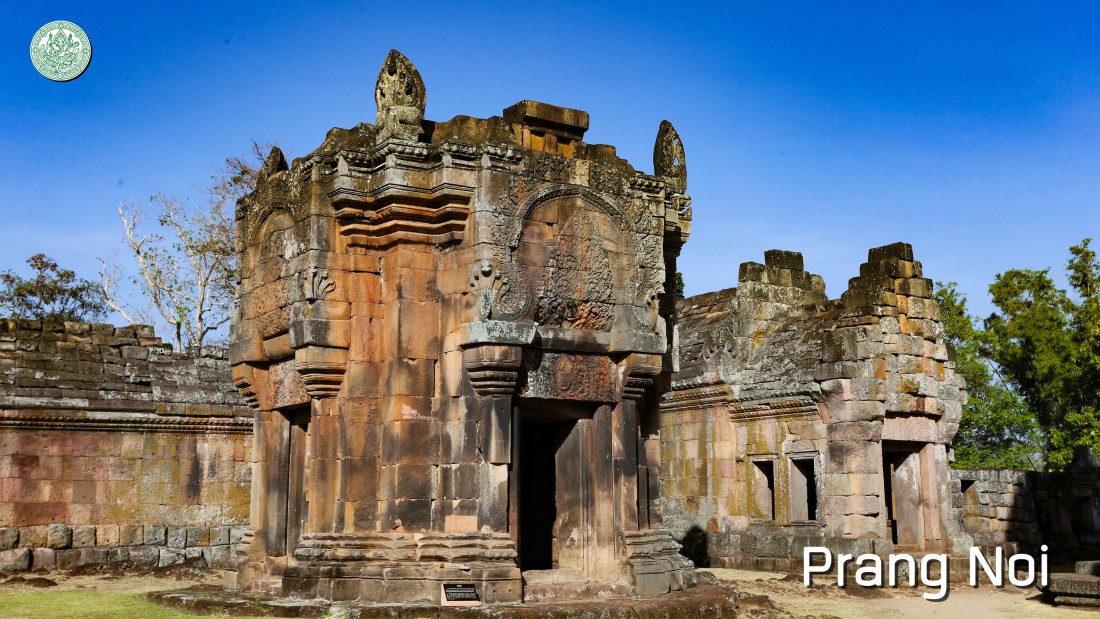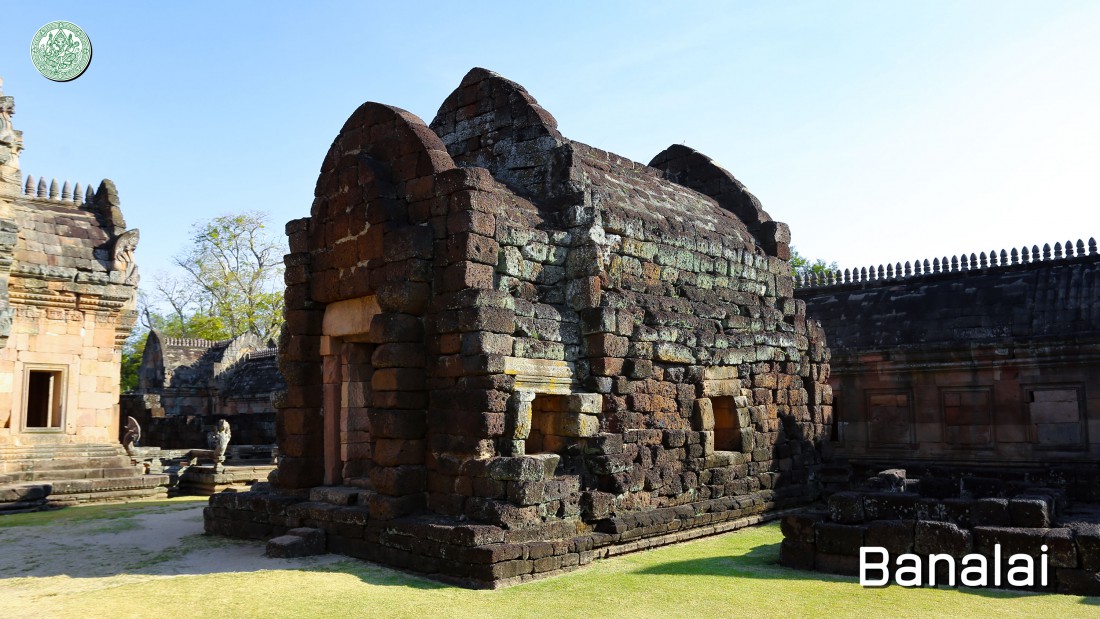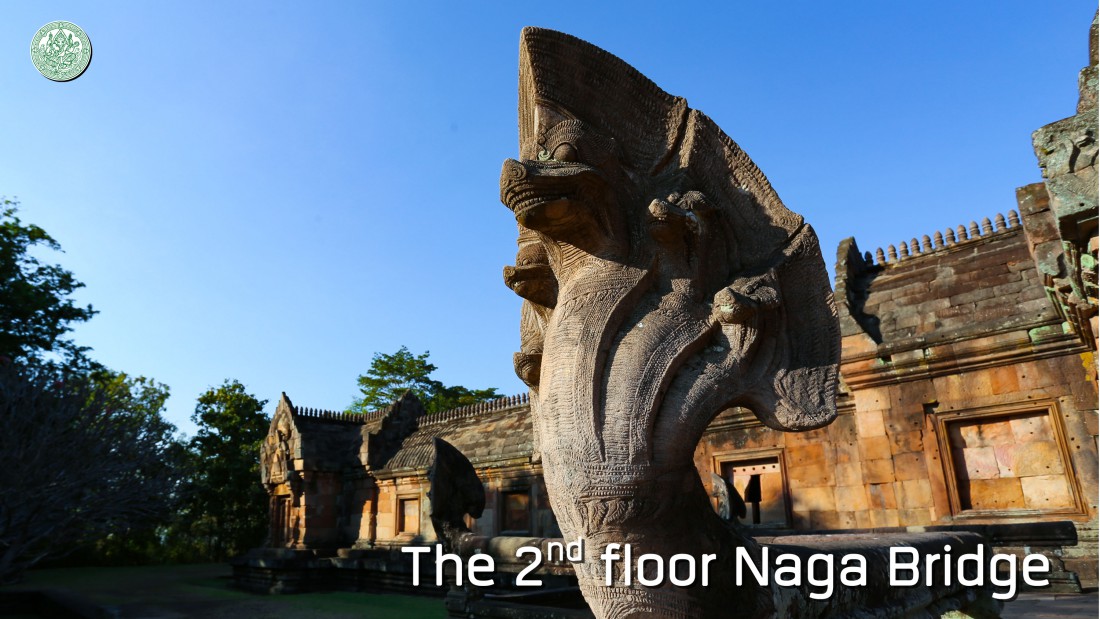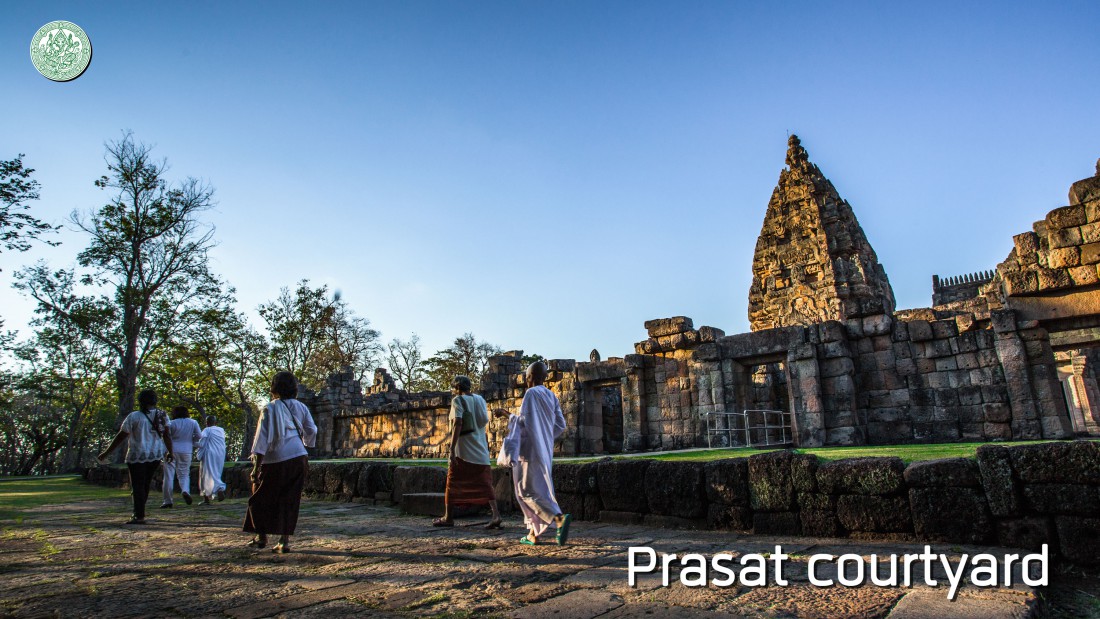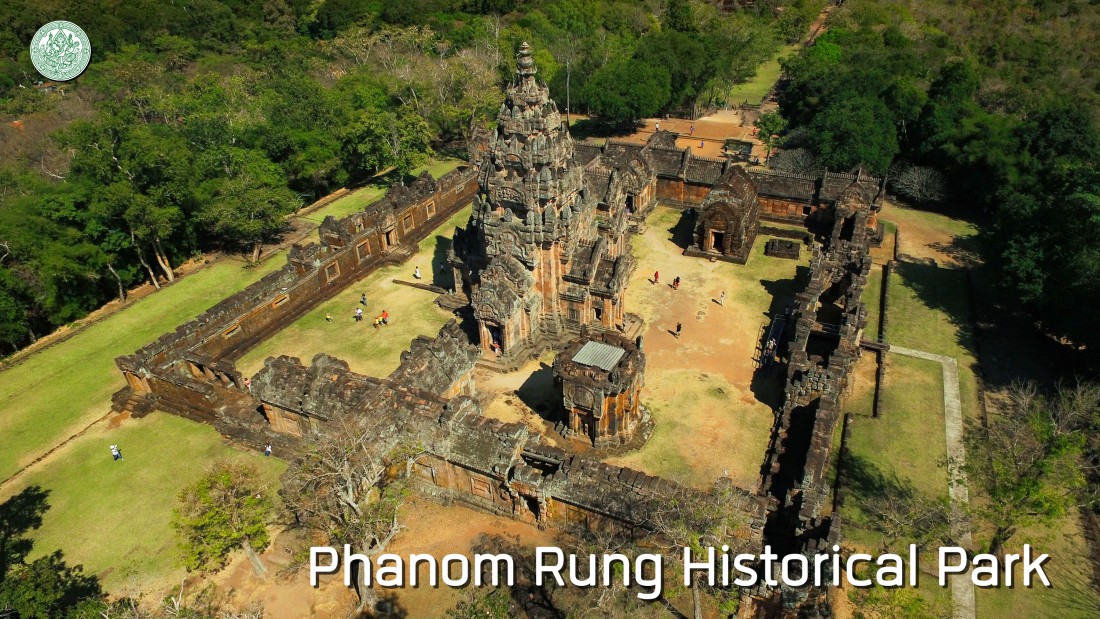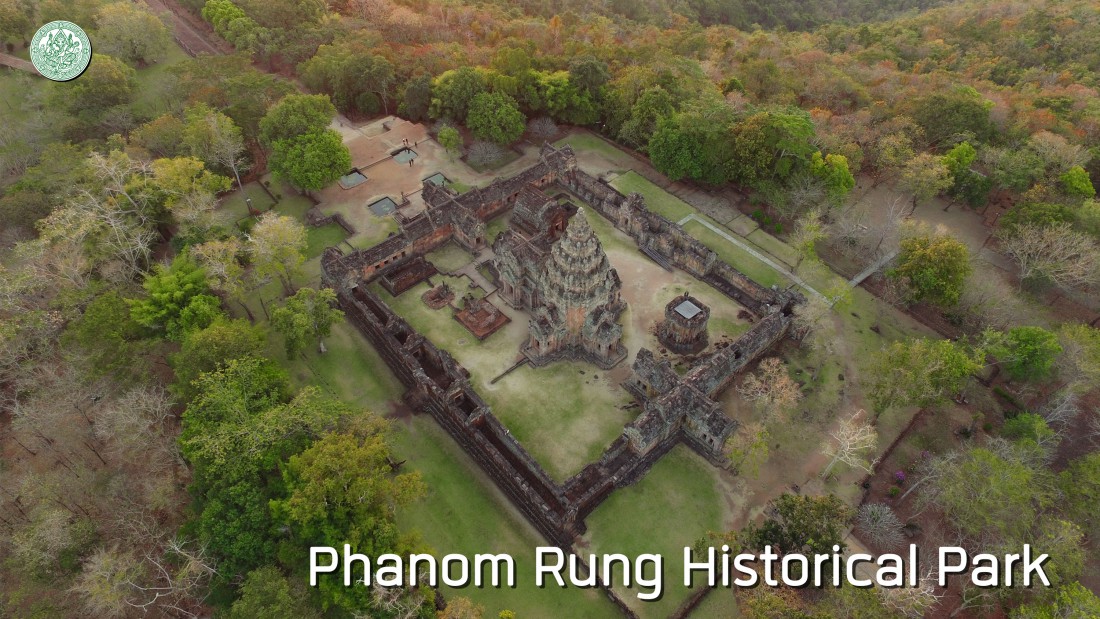Historical background and importance
| Phanom Rung Historical Park |
|
Prasat Phanom Rung is the historical site that located on the Phanom Rung Mountain in Tambon Ta Pek, Amphoe Chaloem Phra Kiat, Buriram Province. It was built as Ancient Khmer Art’s design that is one of the most beautiful in Thailand. The splendor and immensity of this Prasat can be seen from architectural design and engraved sculpture. The location on the hill top which has a layout along the axis with the buildings’ components aligns straight to the center like Main Prasat. Prasat Phanom Rung is well known for the local. There is a folk tale as Intara Paratha, a story of a vagrant main couple found a shelter as Prasat Hin (stone castle) that both desolate and beautiful among the forest, but for outsiders, the Prasat was first known from the record of French, Etienne Aymonier in 2428 B.E. and also published as an article in 2445 B.E. In 2449 B.E., Krom Phraya Damrong Rajanubhab proceeded to Prasat Phanom Rung in the occasion of proceeding to Isan. Then in 2472 B.E., he proceeded again. The Fine Arts Department has announced the registration of Prasat Phanom Rung as the national historical site in the Government Gazette, 52nd volume, 75th part, on 8th March 2478. During 2503 and 2504 B.E., the Fine Arts Department has explored Prasat Phanom Rung again. Then in 2514 B.E., has begun a reconstruction of the Prasat by the method called Anastylosis (placing components of Prasat back into their original positions). Prasat Phanom Rung was officially opened as Phanom Rung Historical Park by Her Royal Highness Princess Maha Chakri Sirindhorn on 21st May 2531 B.E. The name of Prasat Phanom Rung is an original name of this historical site. The word “Phanom Rung” appeared in the 2nd and 4th stone inscription of Phanom Rung and K.1090, inscribed that Phanom Rung is the name of the shrine that has a wide boundaries, there are land, village, and city which dedicated by the governors and the officers as the areas of shrine. According to the stone inscription and art work evidences that appeared, it can be said that Prasat Phanom Rung was built as Hinduism in Shaivism and Supata sect which honor Shiva as the supreme god. In the first part of the 7th and the 9th stone inscription of Phanom Rung, there is a devotional poem of Shiva. Some stone inscription has mentioned about the creation of Shiva lingam, golden Shiva in dancing posture, and golden Vishnu in Shiva’s figure. The Prasat Phanom Rung was built as a throne-hall of Shiva called Dhewalai on Kailash Mountain. Therefore, a construction of the Prasat on the hill top reflects a simulation of Shiva’s throne-hall on the human realm. All of the buildings of Prasat Phanom Rung were not constructed at the same time. In the first time, a religious place was built as the center of the first religious belief of a community around the 15th century Buddha included 2 Prasat It (brick castle) that in a state of collapse in this time, left only base and door frame. After that, the construction was sequentially continues, there is Prasat Phanom Rung as the center of Ancient Khmer Empire and governor. The importance of Prasat Phanom Rung has been continued until the reign of King Jayavarman V (1511 to 1544 B.E.). He is Hindu in Shaivism same as his father (King Rachan Tara Varman II). He commanded to build an inscription to honor his father and also dedicated a land for shrine. In this period, the shrine on Phanom Rung Mountain literally was the center of surrounding communities. The information in the inscription found at Prasat Phanom Rung demonstrated that the shrine on the Phanom Rung mountain which enshrined an icon as Shiva lingam. There are wide boundaries and land that King Jayavarman V and many levels officers dedicated to the shrine. He had a royal command to make a boundary marker depend on the shrine of Phanom Rung Mountain and also construct the city and hermitage for ascetic. Around the 17th century Buddha, the Main Prasat was constructed. According to an investigation of the 7th and the 9th stone inscription of Phanom Rung can be said that the Main Prasat was constructed in the reign of Narentharathitta, son of Bhupathi Drara Laksamee Princess who’s intelligent and potential in combat. He joined with the force of King Suriya Woraman II for gathering the land together after the war. Narentharathitta got the credit and trust and also gets appointed as a governor that under the control of Mahithorn Pura Dynasty. In addition, he performed a construction of large Prasat for enshrined the icon, and created art work as curving work in various parts that demonstrated he would like to construct the shrine to be a throne - hall of Shiva, there is Shiva lingam as a main part. He also respected another secondary deity. In addition, the information in this inscription showed that Narentharathitta constructed this Prasat to enshrine his icon, preparing to join with the deities that he respected after he died. A strong faith to religion cause he ordained as ascetic until the rest of his life. It can be assumed that he was an ascetic of Shaivism, a typical of Supata sect as originally respected. Son of Narentharathitta like Hiranya pleased to inscribe a story to honor his father and sculpt a figure of Narentharathitta with gold. The buildings in the last period like Banalai and Phlab Phla which was enlarged and reconstructed in the reign of King Jayavarman VII (1724 - 1723 B.E.), the Khmer Empire’s last greatest king. He was a Mahayana Buddhist and pleased to construct 102 Arokaya Sarn (community’s infirmary) and 121 Thamma Sala (pavilion) in the realm under his authority as the information appeared in the inscriptions of Prasat Ta Prohm and Prasat Preah Khan. These ancient sites near Prasat Phanom Rung, such as Kuti Rishi Ban Khok Mueang and Kuti Rishi Nong Bua Rai as Arokaya Sarn, and Prasat Ban Bu as pavilion or Thamma Sala. |
|
|


